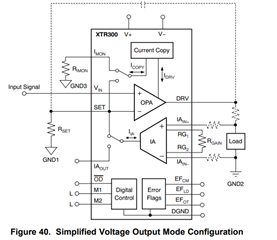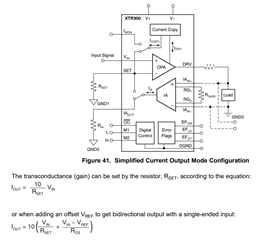Other Parts Discussed in Thread: XTR116, XTR300, , XTR305, DAC8563
Tool/software:
Looking to see absolute maximum current output capability of the XTR300. The XTR116 discusses how to increase maximum output current with parallel resistor to increase maximum output current to 45mA (max).
Can the XTR300 support +/-40mA current output capability? If so, is there an equivalent modification to the reference design (TIPD155) to achieve this?







